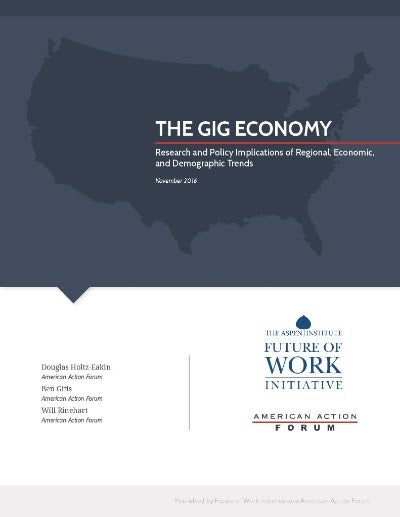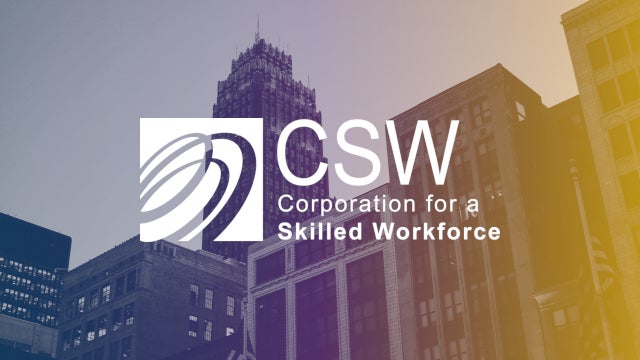This report was produced by the American Action Forum in collaboration with the The Aspen Institute Future of Work Initiative.
EXECUTIVE SUMMARY
Over the past few years, policymakers have grappled with the policy implications of the so-called “gig economy.” This paper adds to the small but growing literature by examining regional, economic, and demographic trends in the gig economy and its workers.
To do so, we use the General Social Survey (GSS) to construct three measures of gig economy workers:
- Gig 1: independent contractors, consultants, and freelancers.
- Gig 2: Gig 1 + temp agency workers and on-call workers.
- Gig 3: Gig 2 + contract company workers.
Our broadest measure of gig economy workers, gig 3, is the same measure of gig economy workers employed by Katz & Krueger (2016). Using these measures, we find:
- The data show rapid growth in gig economy employment. From 2002 to 2014, while total employment increased 7.5 percent, gig economy workers increased by between 9.4 percent and 15.0 percent, depending on the definition of gig economy workers. Between 2010 and 2014, growth in independent contractors alone accounted for 29.2 percent of all jobs added during that time period.
- There is tremendous geographic heterogeneity in the utilization of gig economy workers, with the lowest concentrations in Northeast and Upper Midwest states, and highest concentrations in Mountain and Pacific states. Moreover, what little information is available about regional trends is heavily influenced by the recovery from the Great Recession.
- Gig economy workers are less attached to the workforce and may turn to gig economy opportunities for additional income after getting laid off. All employed people in the United States in 2014 worked an average 46.7 weeks in 2013. Gig economy workers, on the other hand, worked an average 41.8 to 44 weeks. Meanwhile, 6.7 percent to 12 percent of gig economy workers have been laid off from previous work. That’s substantially higher than the 5.4 percent rate of all employed people in the country.
- Gig economy workers are also more likely to be part-time workers, and the portion of gig economy workers who are part-time has increased since 2002. They are also much more likely to mainly work at home than traditional workers, though this difference has narrowed in the last decade.
- The pattern of shifts in the income distribution differs between the entire workforce and gig economy workers, and the pattern within gig economy workers is sensitive to the definition. The timeframe also matters: looking at the changes between 2006 and 2014 (which contains both the downturn and recovery) produces a different picture than that from 2010 to 2014 (which focuses on the recovery).
- Pulling these results together, one finds a picture of the gig economy workforce that is, compared to traditional workers, more likely to be married, but also more reliant on part-time work and more likely to have been previously laid off, perhaps as a result of the Great Recession.
- The online gig economy appears to contribute to firm growth. This is especially true in the transportation sector, where online labor platforms have become pervasive. On average, in metropolitan areas the total average annual growths of establishments and receipts in the transportation sector were 7.7 percent and 9.4 percent respectively prior to the introduction of a ridesharing service, and 39.3 percent and 20.4 percent, respectively, in the years after the introduction of a ridesharing service.
Our results suggest some fruitful avenues for further research. First, the role of gig economy employment in cyclical recoveries stands out as an important issue for understanding overall employment patters, labor supply among couples, and the economic well-being of gig employees. At the same time, the regional differences unearthed in these data merit further documentation and understanding. What, for example, is the role of state-level policy in generating these trends?
These findings suggest a stance of forbearance by federal policymakers. The nature of employment and economic well-being patterns is sensitive to data definitions – always an indication that drawing bright policy lines is a problematic endeavor. It also suggests that there may be a role for federalizing the gig economy policy response.


